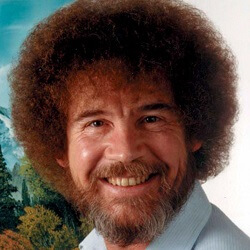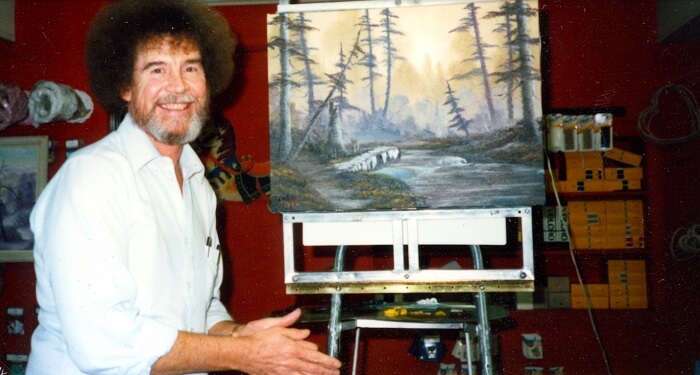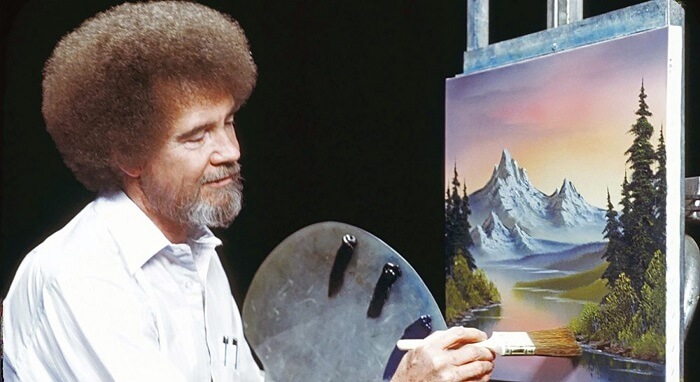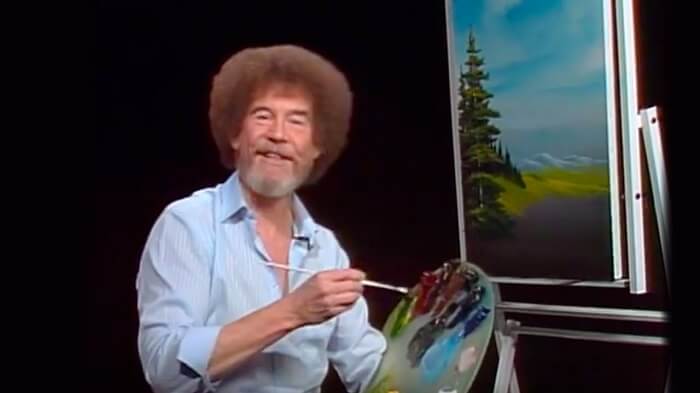Bob Ross
Robert Norman Ross, better known by his stage name Bob Ross, was a well-known painter, art teacher, and television personality. He is best known for his self-produced PBS television program The Joy of Painting. Ross served the country in the United States Air Force as a first sergeant from 1961 to 1981 before becoming a painter and television personality. He made television appearances as a teacher, and presented a program called "The Joy of Painting." He has been a painter since 1983 and has become incredibly well-known. BioBob Ross was just 52 years old when he passed away on July 4, 1995. He was born on October 29, 1942 and raised in an upper-middle-class American family in Florida. He was a member of the Christian faith and an American resident. He left Florida's Elizabeth Forward High School in the ninth grade and never returned to it.
FamilyThe mother of Bob Ross was Mrs. Ollie Ross, a waitress, and his father was Mr. Jack Ross, a carpenter by trade. Bob Ross's brother's name is Jim Ross. Marital StatusBob Ross wed Vivian Ridge married in 1965, and the two were together until 1977. Robert Stephen Steve Ross was the name of a son he had with her first wife. He married Jane Ross soon after his divorce; however, when Jane passed away from cancer in 1992, their relationship came to an end. Again he was married to Lynda Brown in 1995, making it his third marriage. He also had a child with his girlfriend while he was a teenager. Career
After taking several painting lessons, Ross's interest in the subject developed even more, and he went even further into the subject. He even started watching programs like The Magic of Oil Painting, which he found to be highly inspiring and kept him wanting to experiment with new painting methods. Ross decided to leave the Air Force and concentrate more on jobs in the arts in 1981. Ross would carry his painting over the years while keeping his military employment. He eventually reached a stage where the income from his paintings began to exceed the pay he received while serving in the Air Force. Ross created a program called The Joy of Painting two years later, in 1983, which was motivated by his experiences growing up watching similar programs. Ross's instruction on creating wet oil painting methods was the program's primary emphasis. The program became increasingly popular as time went on. Even before he began to teach lessons or sell painting materials, Bob Ross was already starting to establish himself as a brand. Throughout his career, Ross produced over 30,000 paintings, some of which fetched up to $10,000 at auction. He employed wet oil painting methods, particularly in his works. Bill Alexander is one of the people he has named as an inspiration for his paintings and other notable people. Additionally, Ross published a book titled The Best of the Joy of Painting and promoted it by participating in several live performances. How A Master Sergeant Became A Master Painter?
Ross could not have started painting landscapes in an ideal location than Alaska, where he was living. In the area of Fairbanks, there are ice lakes and beautiful woods filled with snow-covered trees that demand to be painted titanium white. Even when Ross returned to Florida, these settings continued to influence him throughout his career. While Bob Ross was teaching himself to paint - and to do it quickly so he could finish a painting in 30 minutes - he found a teacher who would teach him what became his trademark style. A former German (prisoner-of-war)POW moved to America after being freed after World War II and started painting for a livelihood. His name was William Alexander. Alexander later claimed to have created the "wet-on-wet" technique he taught Ross. However, it was only a more refined version of a method that Caravaggio and Monet had already employed. Without waiting for the image parts to dry, he quickly painted oil layers over one another. This approach was ideal for a busy person like Master Sergeant Bob Ross, and the landscapes that Alexander created were an excellent match for his favored subject matter. Ross first saw Alexander on public television, where he ran a painting program from 1974 until 1982. In 1981, Ross made the trip to visit Alexander and pick his brain. After a short while, Ross realized he had discovered his vocation and left the Air Force to devote his full attention to painting and teaching. How Bob Ross Found Success as an Artist?When Bob Ross first decided to teach painting and hadn't yet established an art store line, his books played a significant role in his marketing strategy. Although he occasionally contributed his original paintings for charity auctions, Ross chose not to sell them. His PBS program eventually became the focal point of a $15 million enterprise that marketed palettes, brushes, and enormous easels approved by Bob Ross. He purposefully made his paint line as straight as possible, focusing on the eight hues he consistently used on the program. So that they wouldn't have to become specialists in oil paints or get confused by the variety, new artists could jump in and get started immediately. Ross was still focused on educating his students in addition to the materials. Private courses may be provided for $375 an hour, and talented students might pursue certification as Bob Ross art instructors. The Legacy Of Bob Ross And The Joy Of Painting
Ross's students more accurately imitated Ross's wet-on-wet method. They copied his easy manner and his calm, accepting outlook. When The Joy of Painting was released internationally in 1989, Ross quickly gained followers in Canada, Europe, Latin America, and other parts of the world. By 1994, Ross was a regular on at least 275 stations, and his how-to books were available physically in all of the country's bookstores. Ross appears to have maintained his composure despite his extraordinary achievement, though. He and his family continued to reside in their suburban house. They continued to live as secretly as they could, even though he always took an active role in communicating to Kowalski how he wanted his firm to function. Ross received an unexpected treatment for late-stage lymphoma in the late spring of 1994. The final edition of his program aired on May 17 after being forced to leave due to the demands of his treatment. At a little more than a year, on July 4, 1995, Bob Ross gently passed away from his sickness and was buried in New Smyrna Beach, Florida, not far from where he had grown up. Death and AftermathAnnette Kowalski, the director of Bob Ross, Inc., sadly retained practically all of his creations. Ross, who had hosted "The Joy of Painting" for more than 11 years, passed away on July 4, 1995. Bob Ross's corporation sued his family after he passed away. Although Stephen Ross, his son, had likewise pursued a career as an artist, he was later prohibited from using the wet-on-wet technique on television for fear of being held legally liable. They made money by leasing the rights to use Ross's likeness in producing various products, including "bobbleheads, Chia Pets, waffle makers, underwear imprinted with his beaming visage, even energy drinks "packed with the pleasure and positivity of Bob Ross!" The whole thing was reasonably shameless. The final edition of his program aired on May 17 after being forced to leave due to the demands of his treatment. Nevertheless, Stephen Ross finally prevailed in a legal battle, allowing him to carry on imparting the painting technique of his father so cherished to others. Ross's firm did not significantly damage his reputation, either. The BBC even replayed several of his shows during the epidemic, and he is still watched by many people worldwide today. It hasn't altered how much the people still love him.
Next TopicHansika Motwani
|
 For Videos Join Our Youtube Channel: Join Now
For Videos Join Our Youtube Channel: Join Now
Feedback
- Send your Feedback to [email protected]
Help Others, Please Share









